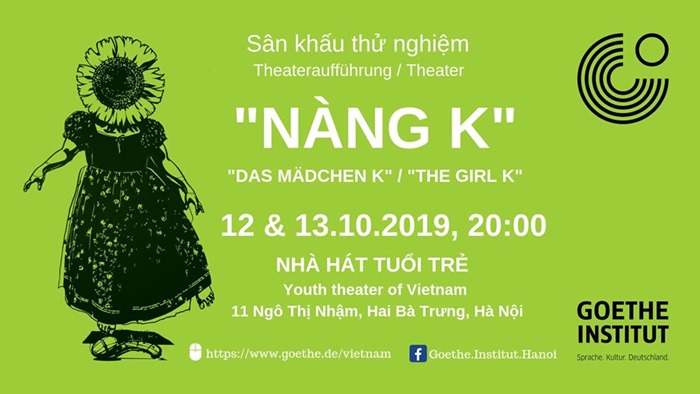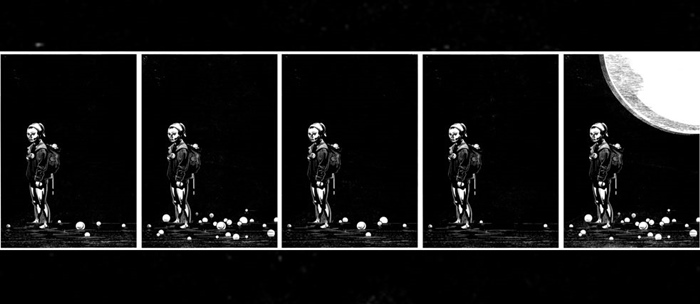The Story of Kieu through perspectives of four directors

“Truyện Kiều” (The Story of Kieu) is considered to be the single most important work of Vietnamese literature. The beauty of its language and the vast array of extreme life situations and hopes in this narrative, the miraculous rescue of Kiều and restoration of her life in dignity form an integral part of Vietnam’s intellectual cultural heritage.
The epic was first time published in German in 1964 by Irene and Franz Faber. Translations help to lift Truyện Kiều into the rank of world literature. Nguyễn Du belongs to the world literary canon like Cervantes, Chekhov, Shakespeare and Goethe. It even appeals to those who don’t know much about Vietnam – it’s the girl’s story that moves readers. It has thus become a medium of cultural understanding and rapprochement with Vietnam.
In appreciation of the translation and in veneration of the original and the poet Nguyen Du, the Goethe-Institut has invited four directors (Nguyen Si Tien, Ngo Dang Hong Van, Tran Luc, Bui Nhu Lai and Amélie Niermeyer) to unfold their original and fresh approaches to this subject matter. For the epic heritage of an epic lives on only if it passes the test of time again and again.
What makes the text and its artistic promise of reconciliation with the world still relevant today? Which image of women is unfolded in the epic?
Today’s reader wonders if the female image of Nguyen Du’s KIEU is still relevant today. What has changed in the last decades?
How does this effect the approach four of the most interesting theatre directors in Vietnam and Germany to bring TRUYEN KIEU to the stage today?
 |
* Inspired by Vietnamese national epic Truyện Kiều – The Girl Kiều, artist Franca Bartholomäi created a wall installation of woodcuts and papercuts that offers a whole new view on the time-honored epic.
Kiều’s name is deliberately abbreviated in the exhibition title, “A Girl Named K”, since Franca Bartholomäi’s mission was not to create a faithful illustration of Nguyễn Du’s book “Truyện Kiều” (The story of Kiều). Instead, she incorporated her own point of view. The woodcuts and papercuts are no renditions of Truyện Kiều, but rather bear Franca Bartholomäi’s own signature: Her metaphorically charged arrangements wed Nguyễn Du’s material and poetic imagery with Bartholomäi’s own associations and reflections on the subject.
In her cuts, Franca Bartholomäi works with her notion of Kiều as well as the overarching themes of the great lyrical epic, from shame, guilt, and humiliation to dignity and hope and a quest for warmth, security, and love.
Franca Bartholomäi’s black and white art exudes as sense of calm, a counterpole to the frantic pace of events in Truyện Kiều as well as to our own everyday lives. Her art invites us to ponder and muse, and perhaps discover a new aspect of Kiều’s story.
The event will be held at Goethe Institut (56-58 Nguyen Thai Hoc, Ba Dinh, Hanoi) from October 8 – 20 and October 25 – 27./.
Recommended
 Handbook
Handbook
Vietnam Moves Up 8 Places In World Happiness Index
 Handbook
Handbook
Travelling Vietnam Through French Artist's Children Book
 Multimedia
Multimedia
Vietnamese Turmeric Fish among Best Asian Dishes: TasteAtlas
 Handbook
Handbook
From Lost to Found: German Tourist Thanks Vietnamese Police for Returning His Bag
 Handbook
Handbook
Prediction and Resolution for the Disasters of Humanity
 Handbook
Handbook
16 French Films To Be Shown For Free During Tet Holiday In Vietnam
 Handbook
Handbook
Unique Cultural and Religious Activities to Welcome Year of the Snake
 Handbook
Handbook
